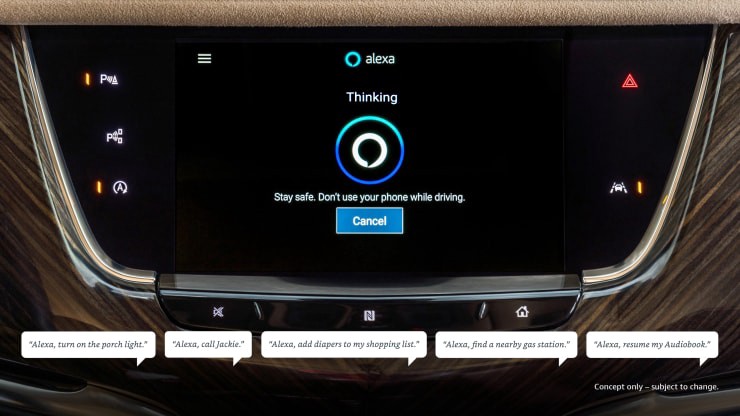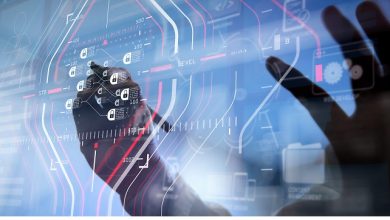Brewing Hot in the Automotive World: In-Car Payments

Mobile payments has truly been a boon for the world economy. It has successfully uprooted the traditional wave of over the counter transactions and ushered us into an era of couple-taps-on-your mobile transactions.
This is exactly the era when the latest in tech greeted the backbone of every economy, the financial institutions, with a big bouquet of innovations and a coronet with Fin-tech inscribed on it.
While the foundation for this was laid in the 90s, it’s taken us about a decade and a half to accept the new suave of transactions. Today, we are surrounded by a big pool of mobile payment wallets and every phone is incomplete without at least one of these apps. But getting to this point hasn’t been easy at all, ask any fin-tech startup.
In the process, these companies have burnt billions of dollars just getting users to adopt a new mindset of commerce. If your mind races to the golden word Cashbacks when you read this, the money spent by these companies offering them was worth it.
Are you someone who kept a track of cashback deals offered by mobile wallet companies? Did you win free carbohydrates in the form of pizzas, desserts and coke?
Did you get to travel with a complete stranger in a cab @49 only for almost 6 months?
Well, kudos, good for you. While many experts labeled these cashback strategies as suicidal, investors’ nightmare and market dampeners, they forget one key upside to using them, the rapid user adoption.
It’s no longer a debate that e-commerce is our present and more innovation resulting in a more automated shopping experience is where we are headed.
Do you shop using e-commerce websites? Regardless of your Yes or No, the ecommerce users are growing globally and by 2025 every 3 out of 5 people will be shopping online. The ecommerce businesses accelerated by a wider adoption of digital technologies, mobile phone and ecommerce apps. E-commerce adoption is supported by secure and reliable connectivity over cellular Wi-Fi networks. In the next few years, the same technology enablers will be a standard and inseparable part of your connected car.
Now that we are used to paying for everything from a single screen, automotive OEMs want to build on this huge advantage and offer users the chance to pay digitally but from a different screen, the one embedded in your car. Yes, we are referring to the infotainment system.
Connected cars are enabling a mode of e-commerce and payments. Initially, we started using e-commerce to buy products as the platform provided more variety, better price, ease of use while sitting on a sofa, shop at any time, and trust in product reliability. Interestingly, over the last few years, another trend that has gained pace is subscribing to service. We were used to paying for only public utility services electricity gas water, wastewater, garbage collection and broadband. In recent years there has been addition to these services like entertainment (Netflix, Disney, HBO, Apple TV), and more products are now bought as service like ADT security, Nest thermostat and most of the software are subscribed SaaS. It is estimated that household in United States are now subscribing to an average 5 content services. Connected car service from automotive OEMs is another addition to our subscriptions.

Let’s look at the top use cases for in-car payments which have been rolled out in different vehicle segments:
1. Alliances with Gas and Electric Charging Stations — Some Car OEMs have already added an app to the vehicle dashboard in partnership with gas and e-charging stations that allows customers to select and pay for their fuel or charge from their vehicle dashboard. The biggest advantage of having this experience is not only that it saves customers from swiping their card or navigating through menus at gas station terminals, but the vehicle knows exactly how much fuel it needs.
Going a step further into the highly anticipated truly driver-less future, the vehicle itself will be able to complete the trip to the gas or charging station while you are running an errand or eating lunch. Now, who would not want such a responsible car?
2. Pay for Food — A connected car has the promise to not keep you waiting in the alley for food, no chance. So far in connected cars, we have seen that you can order your food from a selected food joint and collect it from the drive through. By the time you arrive, it’s usually ready and then you take out your wallet to pay for it. Not anymore. In 2016, MasterCard partnered with General Motors and IBM to integrate payments into OnStar Go, an AI-powered version of the system. This meant that using your OnStar subscription, you can now also pay for food and drinks from the car dashboard. It’s a one hundred percent integrated experience. Select the meal, pay for it right there using your credit card.
Again, just to give you a glimpse of what lies ahead, your autonomous vehicle will pick up pre-ordered groceries, meals while you are finishing up your work day and the car would meet you as you walk out your office door. In case you’re wondering, no, Seinfeld didn’t predict this.
3. Buy or renew Insurance — The Insurance sector is going through an extremely innovative phase as well. For motor insurance, there is UBI (Usage Based Insurance) which means the insurance company would make use of the telematics data collected from a connected car and calculate discounts or premiums based on that data. Basically, be prepared to have a registered driver’s report card wherein your driver behavior would be captured. Now, we will cover this exclusively in a different blog post, so don’t jump into conclusions yet. A lot of OEMs have added the option to renew your annual car insurance from the connected car app itself. But over time, they have just gone a step further and integrated the option to renew insurance from the car dashboard itself. OEMs are hell bent on giving you everything on that one screen and keep you away from your phone as long as you are behind the wheels.
4. Book your parking spot — This isn’t as simple as it sounds, trust me. Select a free parking spot from the car dashboard, book it for a fixed duration, and pay in advance for it from the car, voila. There is another way to do this. Visa and Honda have been working on in collaboration with smart parking meter manufacturers and have demonstrated a new in-vehicle payments system. Honda drivers will be alerted when they pull up to a beacon-equipped smart meter, and they can pay just by touching a button on the dash. As we witness more and more work being done in US and Europe to increase adoption of this use case, countries which really need this system like India and China, have parked it for the future.
5. Renew those Subscriptions — Subscriptions are the new buzzword. Every new business today is somehow thinking about a subscription based model, especially the manufacturers. We are about to enter a phase of life where we won’t even remember the count of subscriptions we pay for. Take a moment. You can categorize them into content (Netflix, Amazon Prime, Spotify, FT), Food & Groceries (Amazon, Zomato), Shopping (Amazon, Just Fab, Krate), Health & Wellness (Bombay & Cedar, MindWander), Dating (Tinder, Bumble) etc. Now, this is where the auto OEMs plan to piggyback on the popularity of subscription based models and cut themselves that additional slice of revenue. Apart from renewing telematics subscriptions offered by the OEMs from the dashboard itself, they will offer renewing various other subscriptions that you may or may not have subscribed for.
6. Cruise through tolls — While there are partnerships being forged between financial companies like Visa and MasterCard, automotive OEMs and ecosystem institutions like gas stations and parking meter companies, we believe that paying for national tolls through the car dashboard will be a by-product of such tie-ups. For example, Visa has partnered with Toll services in various countries. It wouldn’t take them much time to enable in-car automatic toll payments for multiple OEMs as they continue to on-board them.
7. From Add to cart to Checkout — Whilesome OEMs already allow adding items to cart from the car dashboard, with the integration of payments, on the spot checkout isn’t too far as well. Let’s see what Ford is doing additionally to enhance the shopping experience of their customers.
Ford Motor was one of the first car manufacturers to add Amazon’s Alexa digital voice assistant to its vehicles. The first phase of its Alexa integration would allow users to connect to their cars from inside their houses to their Amazon Echo, Echo Dot and Amazon Tap devices. You can start your car’s engine, check the fuel level, lock or unlock the doors and even gauge the battery life just by chatting with Alexa. While this sounds awesome, they have gone ahead and allowed users to talk to Alexa from inside their cars, enabling them to edit their shopping lists and even buy stuff while driving. Drivers will be able to order any item available via Amazon Prime in their Alexa-equipped cars, and the voice assistant will even make product recommendations based on order history.
While these were the top use cases we have observed for in-car payments which are either being launched or in the works, let’s also look at some other trends which are evolving rapidly in this space.
In-car voice-assisted shopping is gaining some serious momentum, thanks to the tech giants — Apple, Amazon, Google, Microsoft. Imagine using voice commands to order any item and pay for it. While these voice assistants sound cool and Genie like, granting you your wishes, they are not as simple to work with. As it often happens with navigation and other voice commands in the car, not understanding or wrongfully translating your voice command could cause some serious damage. It can potentially add some distraction and frustration, maybe even a lead to a new form of road rage, as if we don’t have enough reasons already.
To plan around these issues, automakers and system manufacturers must consider the entire customer journey from determining what to buy, researching options, checking inventory, and ultimately adding products and services to cart and payment functions when designing UX/UI solutions.
What started with the integration of voice-command applications like Alexa and Siri for navigation assistance and infotainment, car manufacturers have shifted their entire focus to delivering direct-to-consumer mobility services and unified experiences along the entire customer journey and some of them are even building their own in-house voice assistants. The next couple years could see some very exciting and innovative in-car payment propositions come up.
Another very interesting concept being worked upon is the use of blockchain in vehicles. Though these are still early days, a lot of thought has already gone into building proof of concepts. Let’s look at an early example here. The Blockchain Factory of Daimler Financial Services (DFS) has developed the Mobility Blockchain Platform (MBP) together with four startups, one of them being a blockchain interface startup RIDDLE&CODE. Under this partnership, the blockchain company will provide a hardware car wallet solution, basically a digital wallet, to give the vehicle a network identity that enables it to handle transactions automatically. Daimler’s MBP is a decentralized software platform that makes it possible to offer and manage mobility as a service with end-to-end encryption. With initiatives like these hitting the market, a future where your car has its own digital wallet transmitting and storing data and payments over blockchain or distributed ledgers doesn’t seem far at all.
While the in-car payments space seems to be taking enormous strides every couple months without throwing any caution to wind, experts have expressed security concerns, after all, its money we are dealing with. These payment systems can be protected with techniques and approaches quite similar to mobile security systems, such as multi-factor authentication, data breach prevention and fraud detection and prevention. So far, such measures are being taken into consideration by all alliances between financial institutions and OEMs. But since malware and fraudulent transactions are also part and parcel of life, you never know when your car wallet starts doling out your money without your approval. Just keep a check, would you.
Authors:

Published in Telematics Wire

